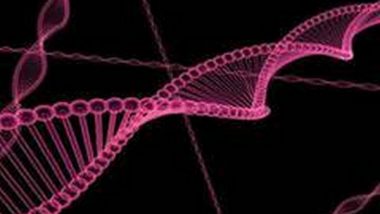Washington, June 20: Researchers from Miami University in Ohio have optimised a new technique that will allow scientists to evaluate how potential inhibitors work on antibiotic-resistant bacteria. This technique, called native state mass spectrometry, provides a quick way for scientists to identify the best candidates for effective clinical drugs, particularly in cases where bacteria can no longer be treated with antibiotics alone.
This research will be presented at the American Society for Microbiology World Microbe Forum online conference on June 21, 2021. Overuse of antibiotics in the last century has led to a rise in bacterial resistance, leading to many bacterial infections that are no longer treatable with current antibiotics. Good Dental Health May Help Prevent Heart Infection from Mouth Bacteria, Claims Study.
In the United States each year, 2.8 million people are diagnosed with a bacterial infection that is resistant to one or more antibiotics, and 35,000 people die due to the resistant infection according to the Centers for Disease Control and Prevention.
"One method of combatting antibiotic resistance is using a combination drug/inhibitor therapy," said Caitlyn Thomas, a PhD candidate in chemistry, presenting author on the study.
An example of this type of therapy is Augmentin, a prescription antibiotic used to treat bacterial infections of the respiratory tract, which is composed of the antibiotic amoxicillin and the inhibitor clavulanic acid. Clavulanic acid inactivates a key protein that the bacterium uses to become resistant to amoxicillin. With the bacterial protein inactivated, the antibiotic -- amoxicillin -- is left to kill the bacteria, thereby treating the infection.
Before any new inhibitor can be used in the clinic, scientists need to have a complete understanding of how the inhibitor works. In the current study, Thomas and her team studied a bacterial protein called Metallo-beta-lactamase, which renders many clinical strains of bacteria resistant to all penicillin-like antibiotics. Penicillin-like antibiotics make up over 60 per cent of the entire antibiotic arsenal that is available to treat bacterial infections.
While many research labs throughout the world are attempting to create new inhibitors that inactivate Metallo-beta-lactamases, Thomas and collaborators instead analyze how these new inhibitors work.
"Because Metallo-beta-lactamases contain two metal ions we are able to use a variety of spectroscopic techniques to study them," said Thomas. "These experiments give us more insight into how to inhibitor behaves and whether it could potentially be a candidate for clinical use in the future."
Hundreds of potential inhibitors have been reported in the literature, and several patents have been filed dealing with Metallo-beta-lactamase inhibitors. Some of the reported inhibitors work by removing a required component of the Metallo-beta-lactamase.
These same inhibitors may remove this same required component of other proteins in humans, causing serious side effects. Other inhibitors bind directly to the Metallo-beta-lactamase and inactivate the protein; inhibitors of this type are optimal for any new inhibitor that could be used in the clinic.
(This is an unedited and auto-generated story from Syndicated News feed, LatestLY Staff may not have modified or edited the content body)













 Quickly
Quickly



















